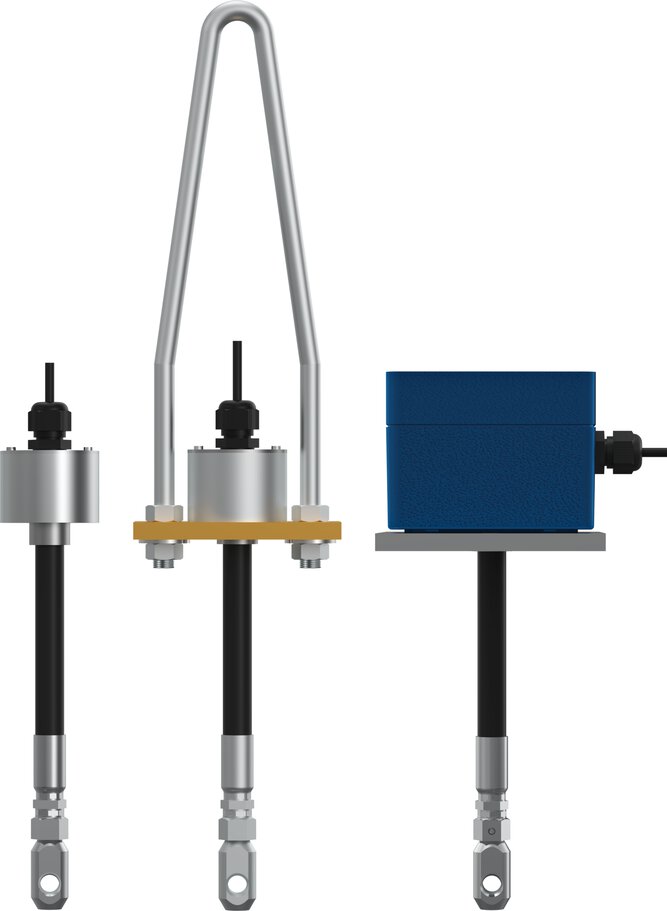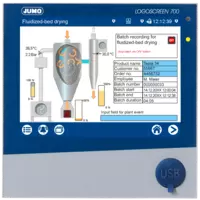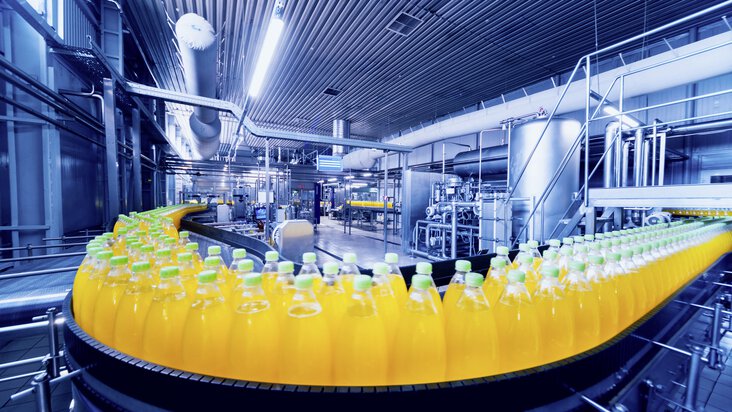

Reliable storage of grain
Over 45 million metric tons of grain are harvested annually in Germany. In addition to water content, temperature is one of the most important measurands used to ensure quality during storage. The top-selling grain is wheat, which makes up nearly half of the overall harvested amount. A significant portion of grain is stored until it is further processed. Even in June – which is shortly before the harvest – up to 8 million metric tons of grain are still available in silos and similar storage facilities.
Task
Numerous parameters must be considered when storing grain. These include drying and ventilation until the grain can be stored as well as the prevention of mycotoxin formation from mold. The increase in temperature after reaching the storage temperature is an important signal. It is a sign for the occurrence of grain weevils.
An elevated temperature is also an indication of excessive moisture or water content in the grain. In this case germination starts and the temperature rises. Moisture in the silo also increases the incidence of pests and moulds. Unlike other types of grain, the germination capacity and germination energy of malting barley is crucial for further parts of the process. This means that malting barley requires sufficient ventilation. Temperature monitoring therefore also plays an important role for this type of storage.
Risk of explosion
Temperature monitoring therefore plays an important role in this type of storage. ATEX approval is required for the temperature sensors used. Due to the dusts present in grain silos, they are considered potentially explosive areas.
Dust inevitably accumulates during the treatment and processing – in the form of particle adhesion, grain abrasion, and ultimately as finely ground grain flour. When stirred up, this dust can create a potentially explosive atmosphere which must not be ignited under any circumstances. Therefore, in addition to the actual production equipment, all applied measuring devices also need to be constructed according to the ATEX directive. In most cases, the silo's headspace is classified as zone 20 – a place in which a potentially explosive atmosphere in the form of a cloud of combustible dust in the air is continuously present for long periods.
High temperatures and increased water content lead to massive respiratory and quality losses.
Solution approach
Using temperature monitoring as well as the visualization and archiving of data, a storing process that preserves quality and that protects the product can be documented. To this end, JUMO has an ATEX-approved special multipoint temperature probe in its product range that can be used to acquire temperatures at various heights in a grain silo. This probe was developed and produced by JUMO's French subsidiary in Metz.
The JUMO silo probe can be fastened either to a metal construct or a concrete panel. The aluminum or stainless steel connection housing with protection type IP6X facilitates measurement exchange when the silo is full. In the probe, Pt100 or Pt1000 sensors guarantee a high degree of accuracy and measurement repeatability according to DIN EN 60751. The various measuring points can be distributed evenly over a total length of up to 50 m in the probe tube.
JUMO also provides suitable technology for acquiring and evaluating the data. This ranges from various two-wire transmitters, to paperless recorders like the new JUMO LOGOSCREEN 700. It can switch alarms or other systems thanks to math and logic functions. Mobile access to the recorded data is also possible at any time via smartphone using the JUMO Device App. Configuration data can be transferred via USB flash drive so that use of a laptop for the obligatory programming is obsolete. For more extensive systems, the JUMO variTRON measurement, control and automation system can be used as it features a recording function as well.

Grain silos

Silo temperature probe by JUMO with a maximum length of 50 m
Project outcome
The complete temperature measurement ensures safety in the grain silo. The temperature can be used to monitor drying and aeration until storage life is reached and to prevent pest infestation and mycotoxin formation through mould. For this purpose, a temperature sensor with a maximum length of 50 m and a transmitter – both with ATEX approval – are used because of the potentially explosive atmosphere. A paperless recorder or the measurement, control and automation system sends alarms and controls drying and ventilation. Mobile access to the recorded data is possible at any time via smartphone.
- ${title}${badge}







